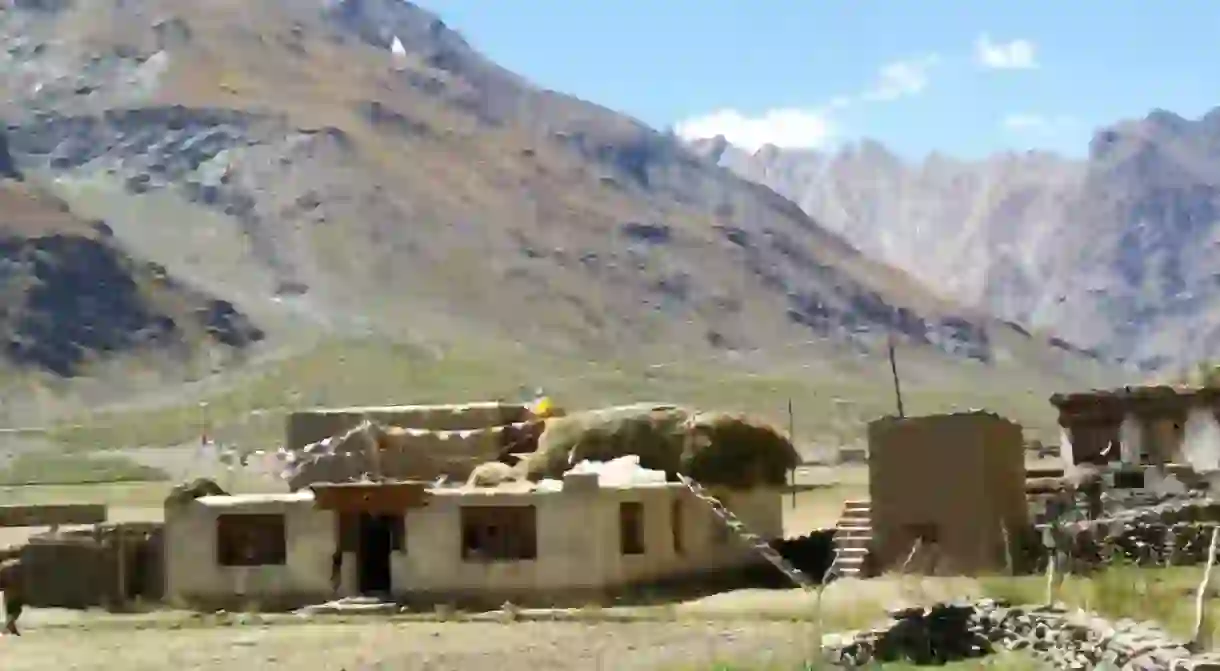Practising Traditional Medicine in One of the Most Remote Places in the World

The beautiful Ladakh in North India consists of rocky mountains, high altitude deserts and desolate moors. Yet its peaceful landscape and picture-perfect postcard aesthetic is hiding a struggle only those living in the remotest of places can understand. In small pockets of remote life around Ladakh, the first flurries of snow in the air can signify the difference between life and death.
The Zanskar Valley is just one area of Ladakh where inhabitants tremble at the first bite of the cold. Between one-lane dirt tracks, tiny villages precariously placed on cliffs which hang above the river, ramshackle bridges and monasteries carved into mountain sides, snow leaves the villagers not only trapped, but inaccessible. This means that when they inevitably get sick, there is no way for them to access outside medical help.

However, there is one way that these isolated areas can receive the medical attention they need. Traditional Tibetan doctors race against the elements, trekking to the outskirts of civilisation to administer medicine and treatment to those villages completely disconnected from Western culture. These trips, vitally, have to be undertaken before the first snowflake falls, which is usually heralded by the appearance of black ice at the end of October and lasts until March. With temperatures dropping below freezing and electricity only available for six hours each day, villagers rely on an angithi,a traditional brazier which generates heat by burning coal for warmth, as well as utilising dry cow dung. Other adjustments to their lifestyle, such as the thick walls in their buildings to enhance thermal efficiency and the use of home remedies like a tea made from butter to prevent chapped lips, help them survive life in winter. These adjustments are even more important considering the lack of medical help available in this season.
The Ladakh area is predominantly a religious one steeped in devout Buddhist tradition. The medicine administered by traditional doctors follows suit. Known as the Amchi System of Medicine, or Sowa-Rigpa, this preferred remedy is favoured in many parts of the Himalayas. A rich combination of science, art, philosophy and religious Buddhism, Sowa-Rigpa is deeply rooted in Ladakh culture. Up until the 1960s, it was the only type of medicine that many people in these remote villages had ever experienced, according to the Ladakh Society for Traditional Medicine.

Operating under the belief that every substance on Earth has medicinal value and therapeutic potential, Sowa-Rigpa utilises only natural ingredients that are often extracted from plants. As well as delivering and administering the medicine, the Tibetan doctors are also responsible for collecting the necessary flowers and herbs and creating the subsequent concoctions.
Some treatments include moxa, which is like acupuncture with a red-hot iron pointer instead of needles, cupping therapy, which uses suction cups on the skin to treat a whole host of illnesses, and truffle-like mixtures of herbs which are swallowed like pills.

When the doctors arrive in the villages, often accompanied by horses which carry the bags and supplies, they find themselves in high demand. People will readily line up to get their pulse checked, which is a traditional Tibetan method of diagnosis, and receive the relevant treatments. Other everyday essentials such as toothbrushes, toothpaste, soap and sunglasses are also routinely given out.
While there are modern hospitals in Ladakh, they are very few in number – there is only one in the capital, Leh. They also tend to be overworked and understaffed, and due to weather conditions many villagers simply cannot get to them during the winter months. There are also some mobile health clinics, consisting of fully equipped buses, that offer modern medicine and which are eagerly awaited by the villagers when making the rounds. Yet again, there is little that can be done in an emergency when the roads are blocked.
This ancient system of medicine has survived due to the customs, traditions and way of life in these mountainous regions. As much preventative care as possible, whether modern or traditional, is needed to ensure the villagers are fully prepared when winter strikes.













